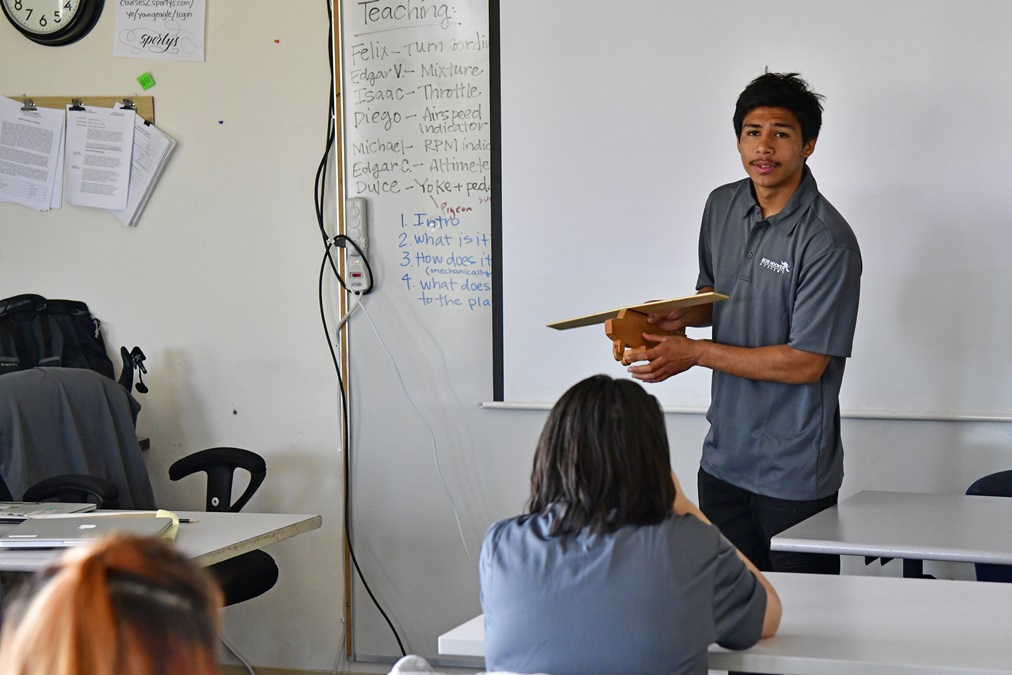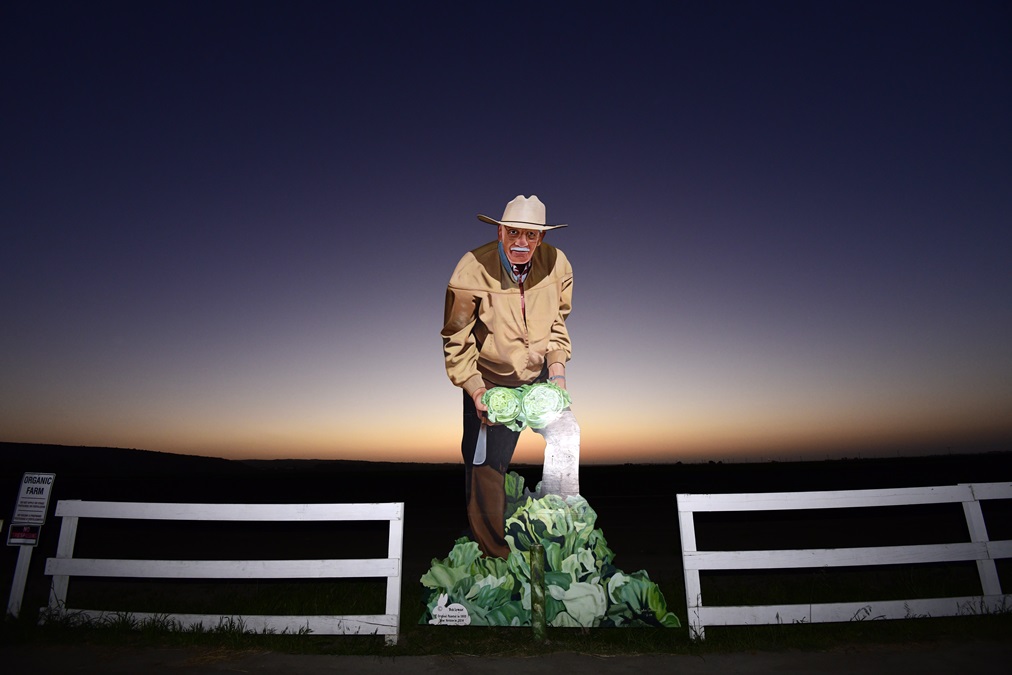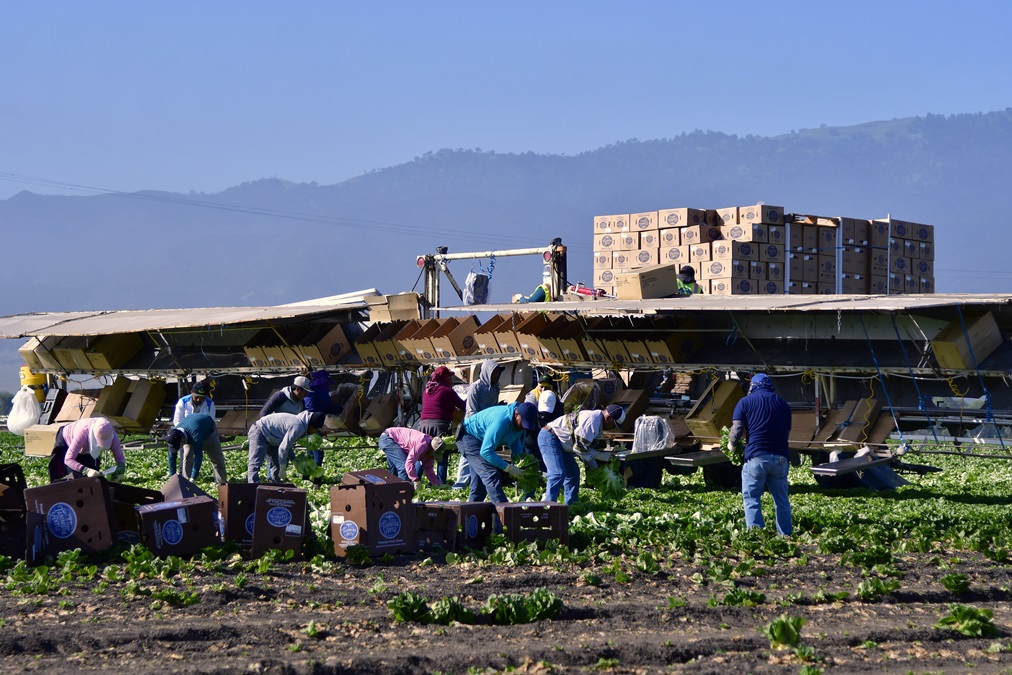Hope flies
Bob Hoover Academy gives students a new future
“Look how clear the valley is, it goes for 50 miles and it’s beautiful,” he says of the area he has called home for most of his professional career. “I sprayed just about every single one of these fields. I was a crop duster in this valley for 10 years. That’s 1,000 hours per year in helicopters and a lot of sunrises.” His agricultural flying drove home an appreciation for the work done in those fields—and the problems that come with it.
“All the vegetables that we grow here go off to America. All the shipping houses, the coolers, the infrastructure—this valley is so rich and fertile it can grow about three lettuce crops in a growing season. This is all high-dollar stuff and it’s all hand-labor to harvest it.”
The problem for local youth is that their parents are often in the fields harvesting crops from sunup to sundown, and Tucker laments that it leaves plenty of idle time for mischief. And, in a city plagued by gang violence, negative influences are plentiful.
With his farmer-friends in mind, Tucker established aviation-oriented, after-school sessions for their sons and daughters to give the next generation hope and a future. The program grew into a full high school technical career program for 20 at-risk and underserved teens learning science, technology, engineering, and math (STEM). The blue-and-white Cessna is the same aircraft four students recently soloed through the Bob Hoover Academy, the school Tucker co-founded with his son Eric. Tangibly, students who complete the program emerge with a high school degree. But more than that, Tucker hopes the feeling of accomplishment from persevering to achieve a goal of soloing an aircraft will be a personal transformational change that allows students to reach for higher objectives such as going to college and embarking on professional or technical careers.
“These kids are smart,” Tucker said. “They might be struggling academically when they start at the academy but when they come out they are changed people. They get to redefine their dream, to have joy again, to be inspired.”
Tucker said his idea for a school struggled at first when it was an after-school program known as Every Kid Can Fly. “Our students come from broken homes and juvenile detention centers,” and some have a chip on their shoulder, he said. “There are gangs patrolling here and there’s a 24/7 assassin squad. They’re broken when we get them, but we’re putting them back together and they’re tough. These kids are our future. They are our precious jewels and you have to give them a shot. They’re not looking for a handout.”
The school found its groove when it partnered with the Monterey County Office of Education and implemented a Monday through Friday, 9 a.m. to 2 p.m. technical career program. The aerobatic specialist renamed it after his mentor and aviation great Robert “Bob” Hoover, who valued education, humility, dignity, and optimism.
On a typical day, students hop from a traditional classroom on the Salinas Municipal Airport grounds—where they learn aviation principles, history, science, English, or other core subjects—to a flight simulator where aviation mentors explain the finer points of flying, or to Tucker’s hangar for flying.
“We teach these kids about emergency landings before they solo,” Tucker explained. “We teach them to be very comfortable stalling the airplane so if there’s an emergency, there’s not a panic moment. I cannot lose a kid,” he stressed. “I want to make sure they fly in the best equipment, and that they get the best skills and training, so that they can be successful. And that’s not only in the airplane, that’s in the high school curriculum as well. This is what’s so wonderful about our partnership with Monterey County—they’re striving to do the same thing. This trust they have with me—they’re betting their jobs and careers on this. This is a big, big gamble,” Tucker said.
Carol Tevebaugh fills the role of flight instructor, den mother, and drill sergeant. Monterey County teacher Christian Lamonea dishes out practical advice and encouragement between core classes. He said students learn about the academy through word of mouth and social media. An interview process is in place that identifies an interest in aviation, and, like the real world, potential aviation students “can’t do drugs or be involved in gangster” activity, Lamonea said.
Because he’s a student pilot himself, Lamonea said he can relate to the same fears that his students face as they build their confidence together. The school participated in AOPA’s You Can Fly High School Initiative ninth-grade STEM curriculum, and Lamonea recently attended hands-on sessions during the roll out of AOPA’s tenth-grade aviation STEM curriculum.
Martin Mendez said when he was a child and first viewed an aircraft in flight it was “almost like magic. I thought in my head, ‘I’m never going to be able to do this.’” “We’re working with these kids each day and our goal is to get these kids to graduate from high school,” said Stacey Wilson, the school’s operations manager and a helicopter-rated private pilot. “Some of them have been expelled, put on probation, and had experiences in their lives that I don’t even want to repeat.” Wilson said the program “opens their hearts again and flying allows them to smile, to laugh, to be a kid again—and maybe for the first time in their life. It’s exciting and fun to watch.”
She pointed to recent graduate Martin Mendez as one of the school’s successes. The Gabilan Community College student passed his airframe maintenance exam and had scheduled the powerplant portion of the A&P oral and practical exams for July 23. “There’s an incredible difference in where he is headed now and where he was then,” she said.
Tucker said Mendez was so bitter when he first arrived “that he actually told the school superintendent to ‘F-off.’ Just look at where he is now—he has an iron will.”
Mendez said when he was a child and first viewed an aircraft in flight it was “almost like magic. I thought in my head, ‘I’m never going to be able to do this.’” But when he heard about the Hoover academy, the experience it could afford, and the paths to new careers, he knew he had found his home.
After several hours in the Cessna—and many more in the classroom—Mendez built up the courage to continue. His eyes lit up when he recalled the day he flew the little aircraft by himself. “It was the best day ever,” the soft-spoken aviator said of his solo. Mendez is the first pilot in his family. “Aviation is something really, really new for my family,” he added, but money is tight. He works at the Salinas airport to afford flight lessons and to buy tools to fill his mechanic’s toolbox.
When asked if his brothers or sisters would follow his footsteps, Mendez looked away and his eyes told the rest of the story. He said one of his dreams was to see more kids from his community pursue aviation and its opportunities.
Mendez was surprised to receive one of four $2,000 flight scholarships from the Northern California Business Aviation Association during the group’s annual safety seminar. The mechanic was applauded by 60 aviators as he cautiously approached the front of the meeting room while Tucker viewed the scene from the back of the room. After a brief ceremony, the normally shy Mendez turned to leave but stopped after a few steps. He paused, gathered his thoughts and returned to the microphone. In a strong voice, he acknowledged Tucker, the Hoover academy instructors, and the community for opening up the world of aviation to him. “I fell in love [with flying] two years ago, and now I view the world in a different way, so thank you so much.”
Diego Merida, a senior, was “scared to death” of getting in an airplane, but he put in scores of hours studying aviation principles and practicing flights. In mid-May he soloed the Cessna in front of a beaming Tucker, who watched from the ramp.
Edgar Chavez had the swagger of a pilot as he climbed from the Cessna 152 after soloing on May 31, the same day he graduated from high school. Fellow students Merida and Madeline de Campos, Tucker, volunteer pilot and mentor Steve Martin, and teachers Lamonea and Trozki Varela gathered to cheer him on.
Leaders in all parts of the aviation industry are starting to notice and support the academy’s mission. When he was awarded the 2018 R.A. Bob Hoover Trophy, pilot, general aviation advocate, and actor Harrison Ford highlighted the accomplishments of Tucker’s academy during his acceptance speech and gave the program high praise for its “metaphor of flight to create social justice.”
When the fledgling school needed a flying classroom, Tucker found the Cessna 152, rebuilt to better-than-new condition by Matthew Goulian, the brother of Red Bull Air Race competitor and AOPA Ambassador Michael Goulian. Aviator and businessman Jim Slattery stepped up to the plate to pay for it. Redbird Flight Simulations Inc. owner Charlie Gregoire said the school was “an incredible program worth replicating throughout the country” and supplied a full-motion Redbird FMX simulator to prove it.
“This is a challenge—flying an airplane is a challenge,” said Tucker. “Facing your fears and conquering your fears one baby step at a time—is a challenge. And [students] using the airplane as a metaphor to challenge themselves, to build their self-esteem, to build their confidence—they’re doing something extraordinary that their peers aren’t, and that’s fabulous, that’s really fabulous.”
He uses the analogy of exploring an aircraft’s personality in all phases of flight to make a point. “Actually, we don’t leave any stone unturned when teaching these kids how to fly because there’s no upside to that. We’re not trying to take shortcuts.” Instructors teach students the basics of flight, building their confidence and their skills bit by bit, until they are ready to tackle more difficult maneuvers. With each milestone, the students find out more about themselves and what they can achieve when they put their minds to it.
“The kids at the Bob Hoover Academy are just fired up to be here,” said Tucker, “and what’s really cool is that they’re fired up about re-identifying themselves. They know this is something special. They get to fly this machine—and it’s just so much fun—and they really appreciate it. We give ’em hope, man, we give ’em hope.”AOPA
Email [email protected]
















